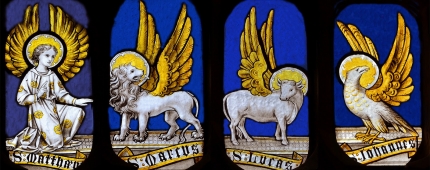Genesis 5:1ff—How can we reconcile this chronology (which adds up to c. 4,000 years b.c.) when anthropology has shown humankind is much older?
Problem: If the ages are added in Genesis 5 and 10 with the rest of the OT dates, it comes out to 4,000 plus years b.c. But, archaeologists and anthropologists date modern man many thousands of years before that (at least 10,000 years ago).
Solution: There is good evidence to support the belief that humankind is more than 6,000 years old. But there are also good reasons to believe there are some gaps in the Genesis genealogies. First, we know there is a gap in the genealogy in the Book of Matthew. Matthew’s genealogy says “Joram begot Uzziah” (Matt. 1:8). But when compared to 1 Chronicles 3:11–14, we see that Matthew leaves out three generations—Ahaziah, Joash, and Amaziah as follows:
Second, there is at least one generation missing in the Genesis genealogy. Luke 3:36 lists “Cainan” between Arphaxad and Shelah, but the name Cainan does not appear in the Genesis record at this point (see Gen. 10:22–24). It is better to view Genesis 5 and 10 as adequate genealogies, not as complete chronologies.
Finally, since there are known gaps in the genealogies, we cannot accurately determine the age of the human race by simply adding the numbers in Genesis 5 and 10.
See All Problems
This excerpt is from When Critics Ask: A Popular Handbook on Bible Difficulties (Wheaton, Ill.: Victor Books, 1992). © 2014 Norman Geisler and Thomas Howe. All rights reserved. Used by permission. Click here to purchase this book.














